DHCD Wishes You a Happy Holiday Season
The end of the year brings no greater joy than the opportunity to express to our readers season’s greetings and good wishes. May your heart be light and your days be merry and bright this holiday season. From all of us at the Department of Housing and Community Development, warmest wishes for a joyful holiday season!
Photo Caption: Department of Housing and Community Development Team
End of Year Recap
As this year ends, the Department of Housing and Community Development (DHCD) would like to highlight some of the programs and tools used to finance or administer affordable housing to guide DHCD’s efforts in creating and preserving healthy and inclusive communities, where access to opportunity for all County residents is increased.
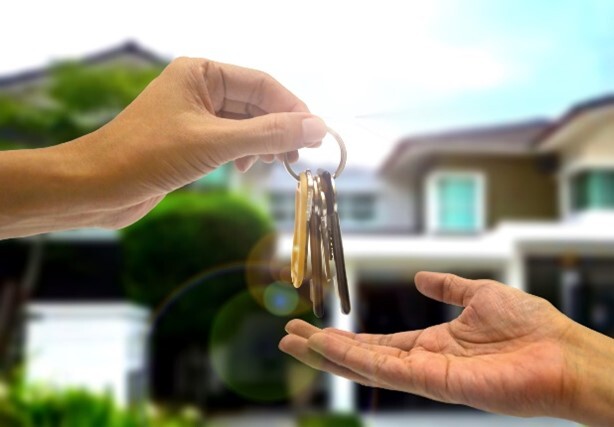
The Department of Housing and Community Development (DHCD) and the Redevelopment Authority (RDA) partnered with the State of Maryland to launch the Maryland Mortgage Program’s partnership with Pathway to Purchase, the County’s First-Time Homebuyer Assistance Program. This partnership will increase the benefits for homebuyers and make it easier to purchase their first home. The guidelines for Pathway to Purchase have changed and the program now offers up to $25,000 in downpayment and closing cost assistance. Pathway to Purchase is still a zero percent deferred loan that is forgiven after 10 years.
Additionally, the requirement for the homebuyer to have 1.75% of the purchase price in cash to put toward the down payment has been lifted.
Homebuyers Receive Even More Assistance When Partnering with the State of Maryland
If homebuyers use a state-approved lender associated with the Maryland Mortgage Program (MMP) and choose the 1st Time Advantage 6000 or FLEX 6000 loan product to purchase their home, any financial assistance they receive from Pathway to Purchase is matched (up to $2,500) as additional down payment assistance. The match funds are added to $6,000 of existing product assistance for a total of $8,500 in a zero percent (0%) deferred loan which is repayable when the home is sold or transferred, or when the first mortgage is paid off or refinanced.
First-time homebuyers or anyone who has not owned a home in the last three years are eligible for Pathway to Purchase. Homebuyers must purchase the property in Prince George’s County. The price limit for new construction homes is $467,000 and for resale homes is $432,000.
To get started, potential homebuyers must qualify for a home mortgage by one of the Pathway to Purchase approved banks or mortgage lenders. The approved lender will forward your paperwork to the Pathway to Purchase team to show you qualify for a mortgage to begin your application.
Visit the Pathway to Purchase website for more information and visit the Maryland Mortgage Program website for details on this program.
|
Housing Rehabilitation Assistance Program

The Prince George's County Housing Rehabilitation Assistance Program (HRAP) provides zero percent (0%) home improvement loans up to $60,000 to eligible homeowners who need to make repairs on their homes. The Department of Housing and Community Development (DHCD) provides the financing, and Housing Initiative Partnership (HIP), DHCD’s community partner, administers and implements the program.
Homeowners who have housing code violations or are living in an unsafe and/or unhealthy environment, use HRAP to bring their house up to code, install weatherization, make ADA improvements, repair major home systems, and more.
Homeowners are not responsible for making monthly loan payments as the payments are deferred, and the principal loan amount is repaid in full when the property is sold or transferred.
Sherry Kilgore, a Hyattsville homeowner, used HRAP and had a new kitchen installed, lead abatement, renovated the bathroom, removed a wall and opened the dining area and kitchen, painted the living room, and had a partial driveway poured. “I am very satisfied with the work completed,” says Ms. Kilgore. “The renovations took two months and the general contractor and I worked well together.”
Eligible applicants must own and occupy their home in Prince George’s County and be current on mortgage payments, property taxes and insurance. Homeowners cannot have an “underwater” mortgage and the maximum loan to value ratio cannot exceed 110%. There are income guidelines associated with utilizing this program.
For information about eligible repairs and to complete an “Interest Form,” visit the Housing Initiative Partnership website.
|
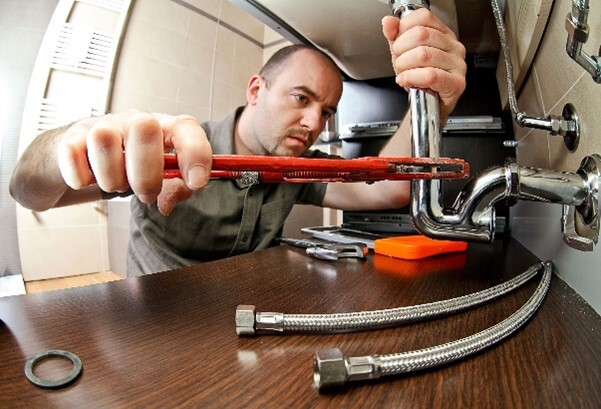
The Prince George’s County Homeownership Preservation Program (HOPP) helps homeowners that need critical improvements to their home to keep it safe and/or accessible. The Department of Housing and Community Development (DHCD) finances the program with American Rescue Plan Act (ARPA) funds and Habitat for Humanity-Metro Maryland, a DHCD community partner, administers the program for residents.
Income eligible homeowners can apply for HOPP if they live in qualified census tract areas of Prince George’s County. Special consideration is given to households in qualified census tracts within 1 mile of a future Purple Line stop. HOPP is not a loan program and applicants do not have to repay the County for the work performed on their home.
Eighty-three-year-old Sidney Banks and his eighty-year-old wife have lived in their Capitol Heights home for 50 years. Health problems have made it increasingly difficult for them to live comfortably in their home. Mr. Banks saw information on the County’s Homeowners Preservation Program (HOPP) and decided to apply to see if he could get some assistance with repairs and accessibility improvements to his home. Check out Mr. Banks’ story here.
To be considered eligible, homeowners must:
- Occupy the home for which you are applying
- Have lived in the home for at least one year prior to applying;
- Priority is given to homeowners having occupied their home for more than 7 years
- Have and be able to provide proof of homeowners insurance
- Have a gross household income less than 80% of the uncapped AMI
- Have a demonstrable need for repairs, accessibility modifications, and/or weatherization
- Intend to remain in the home for a minimum of 5 years post work.
To find out if you’re income eligible and what repairs are eligible, visit Habitat for Humanity Metro Maryland’s website.
|
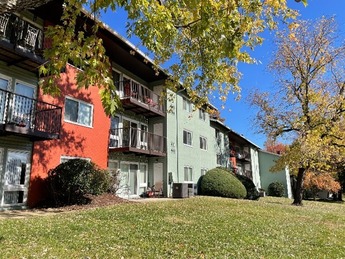
Since the County Administration revamped the Right of First Refusal (ROFR) tool, the Department of Housing and Community Development (DHCD) has been actively working with multi-family apartment owners in using this tool to preserve Naturally Occurring Affordable Housing (NOAH). The ROFR Program has been so successful in preserving affordable housing that the Maryland Affordable Housing Coalition presented DHCD its Innovation Award and cited the DHCD ROFR model as a “Best Practice” in the affordable housing industry.
According to County Resolution CR-51-2015, the County may exercise its Right of First Refusal (ROFR) when an owner of a multi-family rental facility of 20 units or more intends to sell a multi-family property. DHCD has the authority to purchase the property or assign its rights in an effort to stabilize, preserve, and expand housing opportunities for low- and moderate-income households and increase the availability of quality affordable rental housing in designated areas of the County.
Through the ROFR Program, rental properties are required to set aside up to 75% of the units as affordable for households with incomes up to 80% of the Area Median Income. Affordability requirements are enforced through a land use covenant that is recorded in the land records, and which has a term of at least 15 years. For properties located in many areas of Prince George’s County, this long-term affordability restriction delivers significant value to residents through constrained growth in rents at levels well below market.
The ROFR Program was created in 2013 but was rarely utilized as a tool to preserve and expand housing opportunities for low- and moderate-income households. However, in December 2020, under the leadership of County Executive Angela Alsobrooks, the program was relaunched and has experienced much success over the last three years by preserving 1,452 units, to date, of quality affordable rental housing.
For detailed information about the ROFR program, check out this short video and visit the DHCD website.
Photo Caption: Glen Rock Landing, Fort Washington. ROFR was utilized with this property,
providing 91 affordable rental units.
|
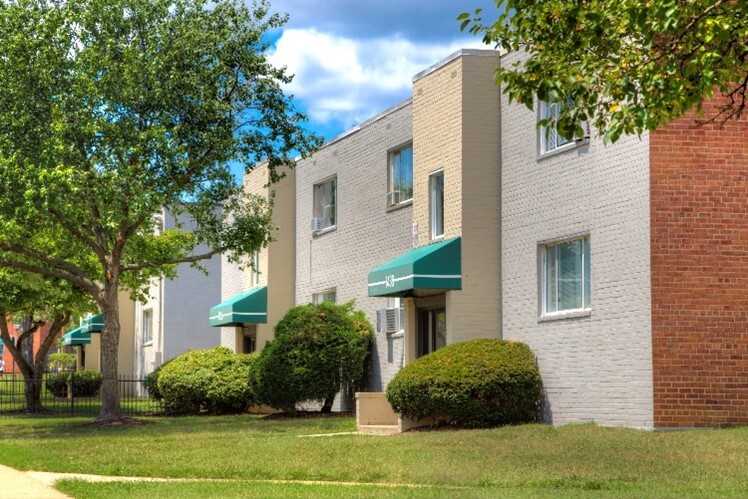
Prince George’s County is committed to preserving housing affordability and working hard to diversify the County’s housing stock. To that end, Prince George’s County Executive Angela D. Alsobrooks launched the Right of First Refusal (ROFR) Preservation Fund and committed $15 million from the American Rescue Plan Act over a three-year period.
The Right of First Refusal Preservation Fund will support the preservation of existing Naturally Occurring Affordable Housing (NOAH) in the County. It will be used to strengthen the implementation of the existing ROFR program and will assist in preserving the affordability in properties located in Qualified Census Tracts, particularly in transit-oriented areas as well as targeted areas of economic development growth. The fund will help to ensure that low and moderate County renters can maintain residency as the County grows and prospers.
For more information about the ROFR Preservation Fund, including a map of the ROFR properties throughout the County and the Term Sheet for the ROFR Preservation Fund, visit the DHCD website.
Photo Caption: Bedford-Victoria Station, Langley Park, received the first loan from the ROFR Preservation Fund.
|
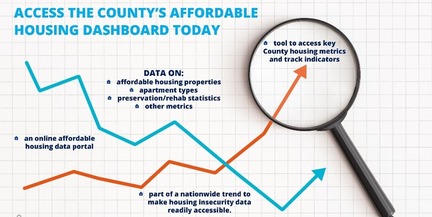
Earlier this year, the Department of Housing and Community Development (DHCD) launched its new Housing Affordability Dashboard, an on-line affordable housing data portal and tool that serves as a doorway for County leadership, Councilmembers, policymakers, planners, affordable housing providers, advocates, landlords, and residents to access key housing metrics and track housing indicators. Click here to access the Housing Affordability Dashboard portal.
The Housing Affordability Dashboard provides information and data on the number of overall affordable housing properties, apartment types, location, and other metrics. Visitors can filter the dashboard to view for specific data. The dashboard also provides information on single-family home preservation and first-time home buyer locations.
DHCD updates housing statistics and key findings on the Dashboard frequently as new information becomes available.
|
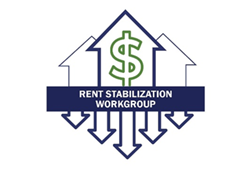
The Rent Stabilization Workgroup held its fifth meeting on Tuesday, December 12. It was live streamed on Prince George’s County Council Member Krystal Oriadha’s YouTube Channel from 1:00 PM to 3:00 PM. If you missed it, check Councilmember Oriadha's Council website to watch the fifth meeting.
This month, the topics included: a debriefing from three previous subcommittee meetings, a discussion of initial policy recommendations, and a discussion of research updates.
The Rent Stabilization Workgroup was formed to develop recommendations that will inform and help create a permanent rent stabilization bill in Prince George’s County. The Workgroup meets monthly to discuss a wide range of housing policy topics.
For more information about the Rent Stabilization Workgroup, visit the Prince George’s County Council’s website.
|

As of December 1, 2023, The Department of Housing and Community Development (DHCD) has distributed over $110 million in funds and supported more than 11,051 households facing housing insecurity after the onset of the COVID-19 pandemic. Since the enactment of the federally funded Emergency Rental Assistance Program (ERAP) in March 2021, DHCD has worked with non-profit organizations and County agencies to keep residents housed during the pandemic. Watch the Emergency Rental Assistance video here to hear from residents who were positively impacted by the program.
If you are facing eviction due to delinquent rent and you have a court summons, court judgement, or warrant of restitution, you may be eligible for the Prince George’s County Emergency Rental Assistance Program (ERAP).
For assistance, call the ERAP HOTLINE at (301) 883-6504, then press 9 and a customer service representative will help you with obtaining an application.
If you are eligible for assistance, ERAP can pay up to 18 months of late rent or provide funding to help you relocate to a new home.
NOTE: The Emergency Rental Assistance Program has not re-opened. Funding is available for eligible renters with a pending eviction.
|
|